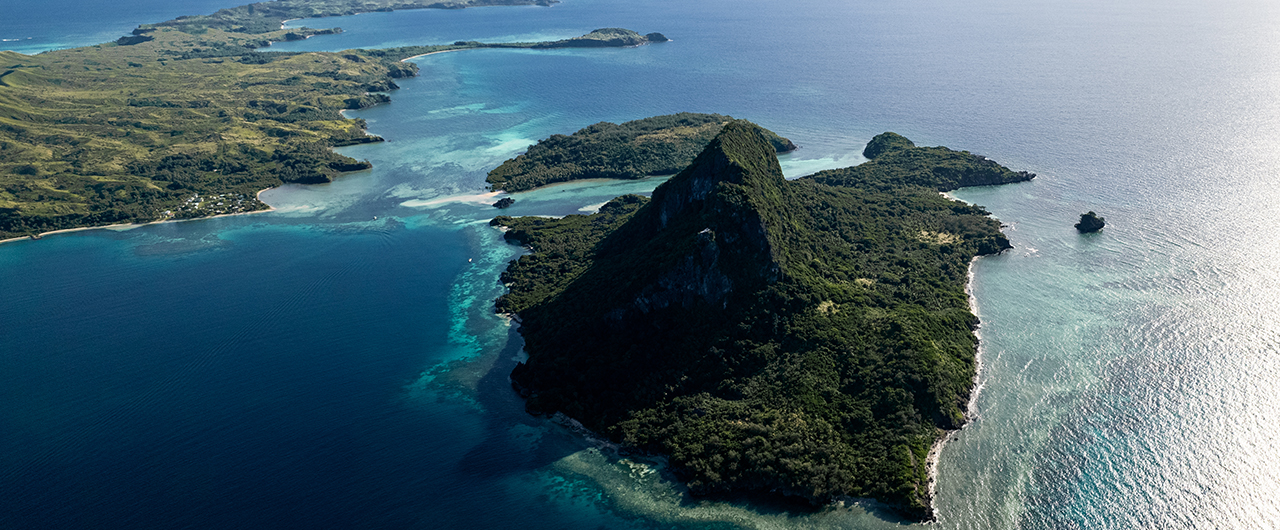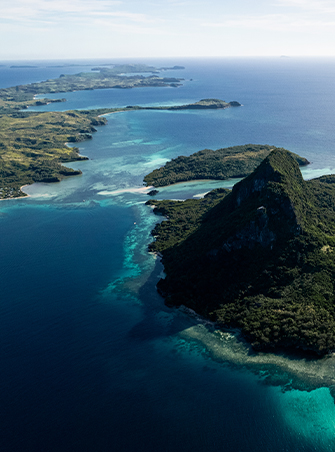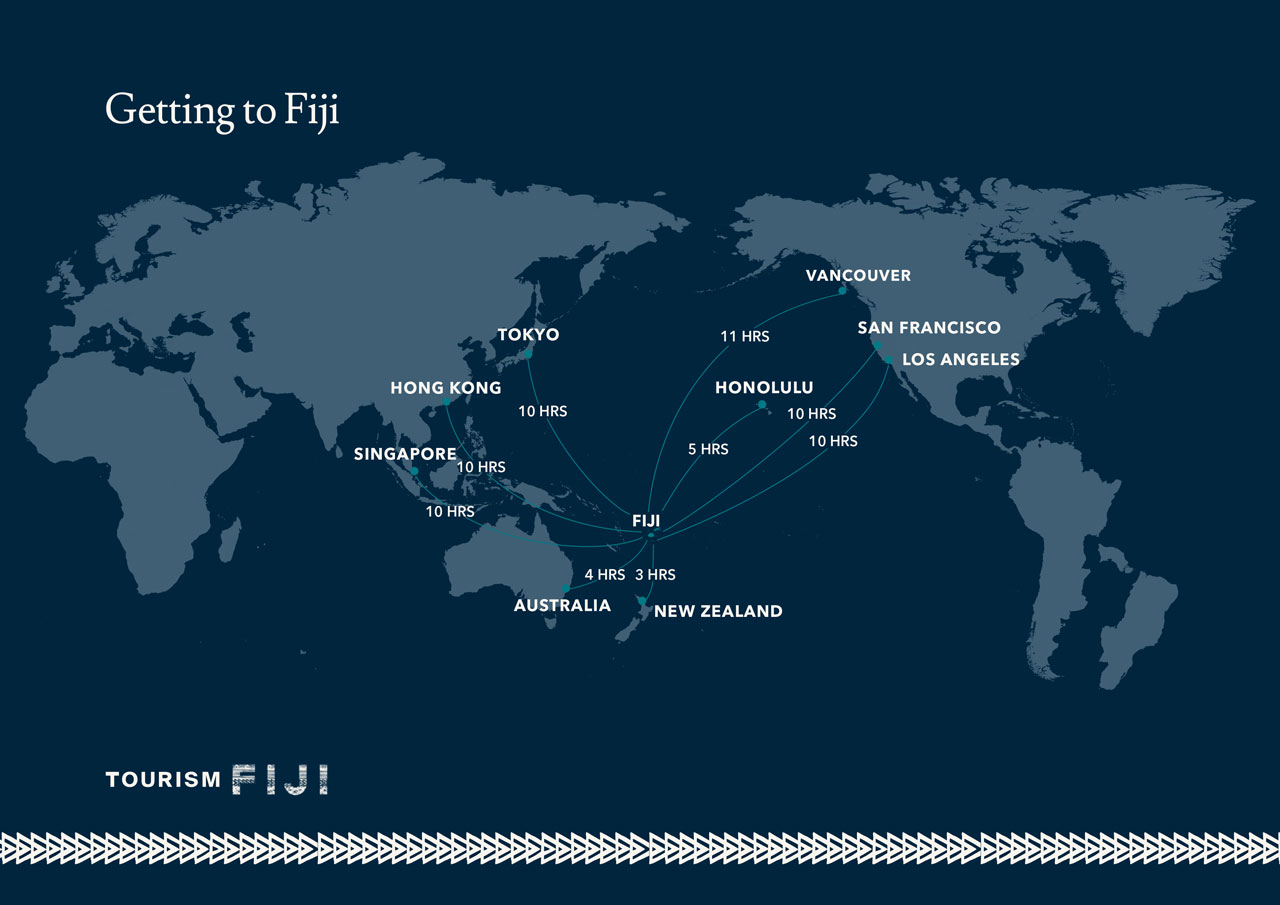Geography of Fiji


Discover Fiji's Diverse Geography: From Volcanic Peaks to Coral Reefs
Location
Situated in the South Pacific Ocean, between the Equator and the Tropic of Capricorn, Fiji is blessed with a sub-tropical climate that promises sunny skies and balmy temperatures all year round. Straddling the 180 longitude (International Dateline), it occupies a central location in the South Pacific making it an ideal flight and shipping hub for its neighbors.

Getting to Fiji is a breeze with regular, direct flights from eastern Australian cities (around 3-5hrs) and New Zealand cities (around 3-4hrs) and connections to many major airports in Pacific rim countries.
Size
Despite its tiny size on the world map, Fiji’s land area of 18,274 sq km is only 3% of its actual territory. Like many island nations, Fiji’s Exclusive Economic Zone (EEZ) is much larger at around 1.29 million square kilometers, giving it control over a massive stretch of ocean and valuable resources like fishing and minerals.
Geology
Most of Fiji’s 333 islands are ancient volcanoes, formed along the Pacific Ring of Fire’s tectonic plate boundaries. Now dormant, traces of their fiery past remain hidden under forests and grassland. You can spot remnants like volcanic cones, calderas and lava flows scattered across the islands, shaping a stunning mix of mountains, valleys and plains. In some far-off corners of Fiji, you’ll also find limestone islands and atolls but these are much rarer.
Map of Fiji

The Main Islands
Fiji can be described as two main islands with a bunch of smaller ones organized into regional island clusters.
Viti Levu – the largest island or ‘mainland’ – spans 10,388sq km and hosts over 70% of Fiji’s 900,000+ population. Nadi, home of the main international airport and a vibrant tourism hub is located on the island’s west coast, just a stone’s throw from Fiji’s second largest city, Lautoka. Suva, the bustling capital city is located in the south-east and serves as the economic, educational and diplomatic heart of the South Pacific.
Fiji’s second largest island - Vanua Levu – lies to the north-east of Viti Levu and is roughly half the size at 5538 sq km. Major towns include Labasa on the northern coast and Savusavu – a tourism hub on it’s southern shore. Taveuni, Fiji’s 3rd largest island is located just off the Vanua Levu’s south east coast.
The Island Groups
Western Islands – Yasawa and Mamanuca
Lying just off the coast of Nadi, the Mamanuca islands are a collection of 20 islands ranging in size from sandbanks and flat islet to higher grass-clad volcanic islands. To the northwest, the more rugged 20+ islands of the Yasawa chain are emptier, with secluded beaches, remote reefs and high craggy peaks that are perfect for snorkeling and hiking. With their beauty, close proximity and easy access from Nadi, these islands are among Fiji’s most popular tourism destinations.
Central Islands – Lomaiviti
Lomaiviti – often called the centre of Fiji – is a collection of 7 sizeable volcanic islands and a handful of smaller ones in the heart of Fiji. This region is steeped in history, boasting landmarks like chiefly Bau Island, Makogai’s leper colony and Levuka, the country’s first European settlement and original capital. Most people who visit this region do so to uncover the tales that shaped Fiji’s past and present.
Eastern Islands – Lau
The cluster of 60+ islands in the Lau group are known for their remoteness and untouched beauty. Traditional village life still thrives here, untouched by mass tourism. With a mix of volcanic, limestone and atoll islands, the region is divided into northern Lau and southern Lau sectors, each boasting pristine beaches, crystal-clear water and vibrant marine life. It’s little wonder that this is a major cruising region for yachties in search of Earth’s most secluded spots.
Southern Islands – Kadavu
Kadavu – Fiji’s fourth largest island – dominates this island group in Fiji’s extreme south but the region also includes Ono, Dravuni, Galoa and many other smaller islands. Protected from open ocean swells by the Great Astrolabe Reef, the region is a magnet for fishing and diving enthusiasts and off-the-beaten path adventurers.
Mountains to Coast
Massive mountain chains cut through the middle of the two large islands acting as a natural rainmaker. When the moisture-laden Southeast trade winds collide with this wall of mountains, they release rain, creating distinct wet and dry zones. As a result, the eastern sides of the main islands are generally wetter and covered in thick jungle while dry forest and grassland dominate western areas.
Large rivers like the Sigatoka and Navua waterways connect the mountains to verdant floodplains providing an environment for freshwater activities like river rafting, tubing, jetboating, and waterfalls. On the coast palm-fringed white sandy beaches, fringing coral reefs and mangrove-lined rivers offer places to sunbathe, snorkel and swim to your heart’s content.
Coral Reefs and Lagoons
Underwater, Fiji’s coral reefs are like a mesmerizing garden, bursting with vibrant colours and teeming with life. Positioned at the edge of the Coral Triangle, Fiji boasts incredible biodiversity. And with two of the largest barrier coral reefs in the southern hemisphere on our doorsteps – the Great Sea Reef and the Great Astrolabe Reef – incredible habitat diversity for divers and snorkelers to explore as well.
From ridge to reef, Fiji offers endless opportunities for exploration and adventure. Whether you’re an adrenaline junkie craving thrills or a laid-back beach lover in search of serenity, you’ll find plenty to see and do in this little Pacific paradise.